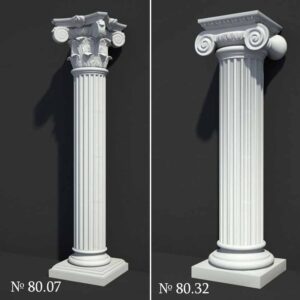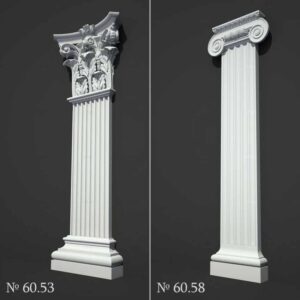Painting experts helped write this material and for more details on this topic can be found here: https://ukrainianvintage.com/collections
Vintage paintings generally refer to works by artists that were painted in a bygone era, typically half a century ago, and are considered unique collectibles for a number of reasons. Firstly, they have historical value and can represent the cultural heritage of painting from a certain era. Secondly, vintage oil paintings can be unique in their artistic expression, both in the visual image and in their content of a certain style of the artist, which was popular in the era of the particular time when this painting was painted. Vintage oil paintings have no restrictions on genres; they can be portraits, landscapes, religious or abstract – this is where their variety of choices for collectors lies.
You ask, what is their main feature? Vintage paintings reflect the skill and technical skills of artists from past centuries, and also explore given themes of a particular time using artistic skills and a combination of ideas that may have been lost or changed in modern art. Each painting that was painted by the artist has its own story, which connects it with the context of the era of that time – this gives it value for collecting. For example, the Spanish artist Salvador Dali, under the impression of the Second World War, painted a number of powerful and emotional oil paintings, one of his special works “The Face of War”. An optical illusion effect is applied to the canvas, which can be seen in his eyes – this symbolizes the endless stream of people killed in the war. Additionally, vintage oil paintings often feature the high quality of materials used to create them – including high quality canvases, oil paints and carefully selected frames.

For collectors, there can be an additional role in vintage oil paintings that have some connection to their previous owners, exhibitions, museums and auctions, which includes such aspects as: provenance, past sales and valuations, as well as analysis of the artist’s style and technique. Let us give an example of a painting by a Western European artist of the second half of the 19th century, “Portrait of a Victorian Girl” – it is an exquisite portrait of a young woman from high society of the 19th century and was made in an academic style. This painting by the artist surprises in its careful detailing and in the conveyance of a noble girl through the richness of her outfit, and at the same time reflects the ideals of beauty of that era, which conveys an atmosphere of calm and is a characteristic feature of portrait art of that time.

Historical painting – cultural heritage
Any vintage oil painting is considered to be a historical focus on the past – whether it is a landscape or a portrait, but the main cherry is a historical genre, the subject of which is: the depiction of historical figures and events in the history of mankind. So, we can say that this is an appeal to the history of the past; there are exceptions, such as the depiction of recent events, which is historically significant for contemporaries. The genre itself was formed during the Renaissance, and fully developed in the 17th-19th centuries – when artists began to pay more attention to accuracy and detail in depicting historical events. For example, socialist realism can be classified as vintage oil paintings that depict the life of that historical era, the main thing is that they were painted several decades ago.

That is why the historical genre in the art of painting is considered “high” or “worthy” in contrast to the genres of still life or landscape – so in the art academy they occupied a special place among other oil paintings. The historical genre includes varieties of works created not only on the themes of significant events in history, but also on mythological and biblical subjects that are interpreted in a specific era with their current context.
There were also conflicts between the real content of the era and its artistic image as a reflection of reality, for example, they could embellish some historical figure or event. On the one hand, this stimulated the development of two main artistic movements: classicism and romanticism, and on the other hand, idealism and academicism. Going back to the example of socialist realism, commissioned by government officials, artists depicted in their oil paintings about an “ideal world” as propaganda for the entire population – when you see the hegemony of the elevation of factories in the paintings, you wonder with what detail the artists approached it. Or a 19th century artist’s interpretation of the life of ancient Greece looks undoubtedly good, but one cannot say that this actually happened.
Painting in Romanticism – passionate nature
For vintage oil paintings, it would be a sin to forget to mention a direction in painting such as romanticism, the peculiarity of which is the depiction of emotions, feelings and individuality. Romanticism, which emerged at the end of the 18th century, differs from other movements in its attention to the inner world of man, nature and the desire for idealization. Artists sought to convey in their oil paintings strong emotional experiences, dramatic scenes and grandiose landscapes that highlight the grandeur and beauty of nature, for example, lush seascapes with waves against the backdrop of the last rays of the sun breaking through dark and gloomy clouds. The feeling from such oil paintings will move from exciting to enthusiastic – as if it were an attraction of emotions.
The artists’ works often reflected themes of loneliness, melancholy, as well as turbulent moments of freedom, leading the people against the struggle of idealization of states; and such aspiration was revealed through the inner world of man. There are fewer geometric patterns and restrained gestures, more colors, emotions, movements in oil paintings, and the main thing is that the artists literally seem to include the audience in the circle of characters, and instead of detached admiration of the oil painting, the effect of participation arises. You may ask, what is the basis of romanticism? At the heart of romanticism is the idea of the self-worth of the individual, which is glorified by the beauty of the struggle with fate. Unlike supporters of the ideas of the Enlightenment, the Romantic artists believed that the world cannot be known in a rational way.

Let us give an example of a painting in the style of romanticism – the European artist “Thoughtful Girl” – depicts her with soft features and a gentle expression, and in her hands she holds a musical instrument, which symbolizes her connection with art and creativity. A girl in a thoughtful and melancholic pose among a vineyard and a sunset in the background – gives the scene poetry and a romantic mood; The oil painting focuses on the emotional state of a person, idealizes the image through the main character, and nature becomes a source of beauty.
Genre scenes are the king of everyday paintings
Vintage oil paintings are also prized among collectors for depicting everyday situations and people in everyday life – this direction is considered to be genre scenes. Paintings are defined as an image of human activity without historical, mythological and religious significance and they contain elements of a landscape, still life, and represent the heroes of the canvas without embellishment – no pathos or heroes. Artists depict ordinary people on their canvases, not individuals, and the plot does not mean the existence of famous events, as is the basis of historical painting. In their oil paintings they conveyed admiration for observing ordinary people, depicted characters with undisguised sympathy, and viewers looked at every detail and watched the plot with great curiosity.

Let’s take an example, the European artist Joseph-Sebastien Constantin and his oil painting “Portrait of Friends” – an everyday scene in a tavern, where elderly men came to meet friends and drink drinks. The artist carefully drew the characters through the details of emotions, and focusing their attention on communication and spending time together; and the interior details create a feeling of realism and muted dynamics, as well as warmth and calm – all this is typical for genre scenes.
Famous artists in vintage oil painting: Masters of pen and paint
Having sorted out some of the main trends in vintage oil paintings, now let’s move on to the list of artists whose works are highly valued by collectors for their unique contribution to art and their ability to reflect the spirit of their era. Here are a few such artists and the reasons for their value:
1) Rembrandt van Rijn (1606–1669) – famous for his ability to work with light and shadow (chiaroscuro technique), which gives his oil paintings depth and drama. His portraits and scenes from life are distinguished by deep psychologism and expression of human emotions.
2) Francisco Goya (1746–1828) – famous for oil paintings that contain deep social commentary and criticism of the political and social injustice of his time. Known for his technique of “black paintings”, where he depicts and expresses his dark visions and fears.
3) William Turner (1775–1851) – known for his dramatic seascapes and depictions of natural elements – a unique approach to depicting light and atmosphere that makes his work easily recognizable. He used his technique of “light and color” to convey depth in his works, and subsequently this had a significant influence on impressionist artists for the development of this genre.
4) Caspar David Friedrich (1774–1840) – known for his romantic landscapes that express deep philosophical and spiritual feelings – conveyed through symbolic elements and create a sense of mystical atmosphere, and convey a feeling of loneliness, melancholy and the sublime beauty of nature.
5) Edgar Degas (1834–1917) – known for depicting movement and dynamics, especially in his paintings he liked to paint ballerinas and dancers – these works provide a unique perspective on the everyday scenes of Paris, which makes his works an important historical and cultural heritage.
6) Edouard Manet (1832–1883) – was an important figure in the transition from realism to impressionism, his oil paintings are much controversial and became turning points in the history of painting. For the use of the technique of “color spots” and compositional techniques, as well as raising sensitive topics in social society, it became an impetus in the genre of impressionism.
Of the famous artists listed, as you can understand, this is not the entire list, but it provides a basic basis for deciding which of the vintage oil paintings is best to choose. As you noticed, painting is multifaceted in terms of genres and directions. And only you will understand what is closer to your liking: rebellious or everyday oil paintings, or some historical event affecting a certain era. As the artist said, “The soul is warmed by what touches you personally, personally evokes emotions from the presented theme on the canvas”.

Where to buy vintage oil paintings?
Vintage oil paintings can be bought in online stores/auctions such as eBay, Etsy, Artfinder, Saatchi – a large selection of different artists and painting genres. You can also look into the Ukrainian Vintage Co store – examples of some oil paintings could be seen in this text. Let’s not forget about the antique shops where you can find unique and original copies of works. Large international fairs are held, such as TEFAF (The European Fine Art Fair) and Art Basel – where buyers and collectors from all over the world will gather – I think there is no need to talk about the fairs in detail, you yourself understand that you should not miss it.
Here the main thing is to remember the words of the artist: “The brush running on the painting – leaves the soul, and when the viewer looks into the painting, it looks into the soul of the artist” – do not be afraid to submit to the painting, and only then you will get all the necessary emotions when viewing.












